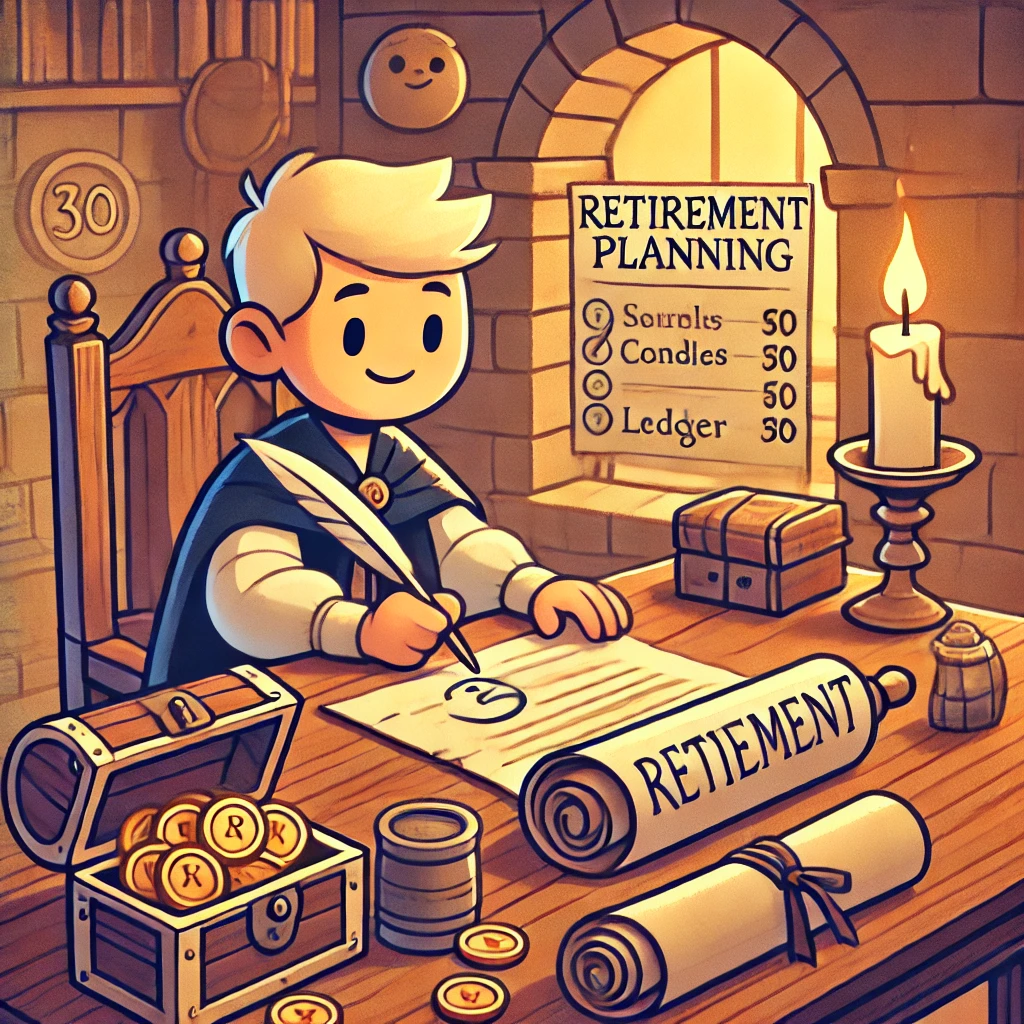Introduction: Why Planning for Retirement in Your 30s is Crucial
When you’re in your 30s, retirement may seem like a distant future. However, starting to plan for your retirement now is one of the most important financial decisions you can make. The earlier you start, the more time your money has to grow through the power of compound interest. In this article, we’ll discuss why it’s never too early to start planning for retirement and how taking action in your 30s can set you up for a secure and comfortable future.

1. The Power of Compound Interest: Why Starting Early Makes a Difference
Starting retirement planning in your 30s gives you the advantage of compound interest. Here’s how it works:
- When you invest money, you earn returns on both the initial principal and the interest it has already earned. Over time, this effect accelerates, allowing your savings to grow exponentially.
- For example, if you start saving $5,000 per year at age 30 and earn an average return of 7% per year, by the time you’re 65, your investment could grow to over $800,000. If you wait until you’re 40 to start saving, you’ll need to save $7,000 per year to reach the same amount by 65.
The sooner you begin, the more you can benefit from the magic of compounding.
2. Maximizing Contributions to Retirement Accounts
There are several retirement accounts that can help you build wealth in your 30s. Understanding the advantages of each one can significantly improve your retirement planning:
- 401(k): If your employer offers a 401(k) plan, take advantage of it. Many employers match a portion of your contributions, which is essentially free money. In 2025, the contribution limit for 401(k) plans is $22,500 ($30,000 if you’re 50 or older).
- IRA (Individual Retirement Account): An IRA gives you more flexibility over your investments. You can contribute up to $6,500 per year ($7,500 if you’re 50 or older) in 2025. Contributions may be tax-deductible, and earnings grow tax-deferred or tax-free in the case of a Roth IRA.
- Roth IRA: Contributions to a Roth IRA are made after tax, but withdrawals in retirement are tax-free. This is a great option if you expect your tax rate to be higher in the future.
By maximizing your contributions to these accounts, you can take full advantage of tax benefits and accelerate your retirement savings.
3. Diversifying Your Investment Portfolio
In your 30s, it’s important to diversify your investments to ensure that you’re not overly exposed to any one type of asset. A well-balanced portfolio can protect you against market volatility and help ensure consistent growth over the long term.
Here’s how to diversify your investments:
- Stocks: Investing in stocks provides the potential for high returns, but also comes with higher risk. As a 30-something, you have time to recover from market downturns, so stocks should play a significant role in your portfolio.
- Bonds: Bonds are a safer, lower-return option, but they can help balance the volatility of stocks.
- Real Estate: Investing in real estate can provide steady income through rental properties or by investing in Real Estate Investment Trusts (REITs).
- Mutual Funds & ETFs: These allow you to invest in a variety of assets within one fund, providing built-in diversification.
The key is to adjust your portfolio as you age, becoming more conservative as you approach retirement.
4. Dealing with Debt: Paying Off Loans While Saving for Retirement
One of the biggest obstacles to saving for retirement in your 30s is debt. Whether it’s student loans, credit cards, or car loans, carrying debt can prevent you from reaching your retirement goals. Here’s how to manage both:
- Pay Off High-Interest Debt: Focus on paying off high-interest debt first, such as credit card balances. The interest on these loans is usually much higher than the returns you could get from investments.
- Save While Paying Off Debt: Once high-interest debt is under control, try to allocate a portion of your income to retirement savings while continuing to pay off other loans. Even small contributions can make a big difference in the long run.
- Automate Savings: Set up automatic transfers to your retirement account so that saving becomes part of your routine. Automating your savings helps you stay disciplined and avoid spending the money elsewhere.
5. Setting Realistic Retirement Goals
It’s important to have a clear idea of what you want your retirement to look like and how much money you’ll need. By setting realistic retirement goals, you can create a roadmap to achieve them:
- Estimate Future Expenses: Take into account your current spending habits and consider how they might change in retirement (e.g., healthcare costs, travel, housing). A common rule of thumb is that you’ll need about 70-80% of your pre-retirement income to maintain your lifestyle.
- Use Retirement Calculators: Online retirement calculators can help you estimate how much you need to save each year to reach your goal. Based on your desired retirement age and lifestyle, you can fine-tune your savings strategy.
- Factor in Inflation: The cost of living will rise over time, so it’s essential to factor in inflation when setting your retirement savings targets.
6. Avoiding Retirement Mistakes in Your 30s
While planning for retirement, it’s easy to make some common mistakes. Here are a few to watch out for:
- Not Saving Enough: Even small contributions early on can have a significant impact over time, so start saving as much as you can, even if it’s a modest amount.
- Relying Too Much on Social Security: Social Security is not enough to support your retirement on its own, so don’t count on it as your only source of income.
- Ignoring Risk: While taking on some risk is necessary for growth, make sure your portfolio is diversified and balanced to minimize potential losses.
Conclusion: It’s Never Too Early to Start Planning
Starting your retirement planning in your 30s can set you on a path toward financial security and peace of mind in the future. By focusing on saving consistently, diversifying your investments, and setting realistic goals, you can create a retirement income stream that lasts. The earlier you start, the better your chances of achieving a comfortable retirement. Start today and make your future brighter!
Take charge of your financial future today by maximizing your retirement contributions and creating a plan that works for you. Start saving now, and secure your retirement later!
